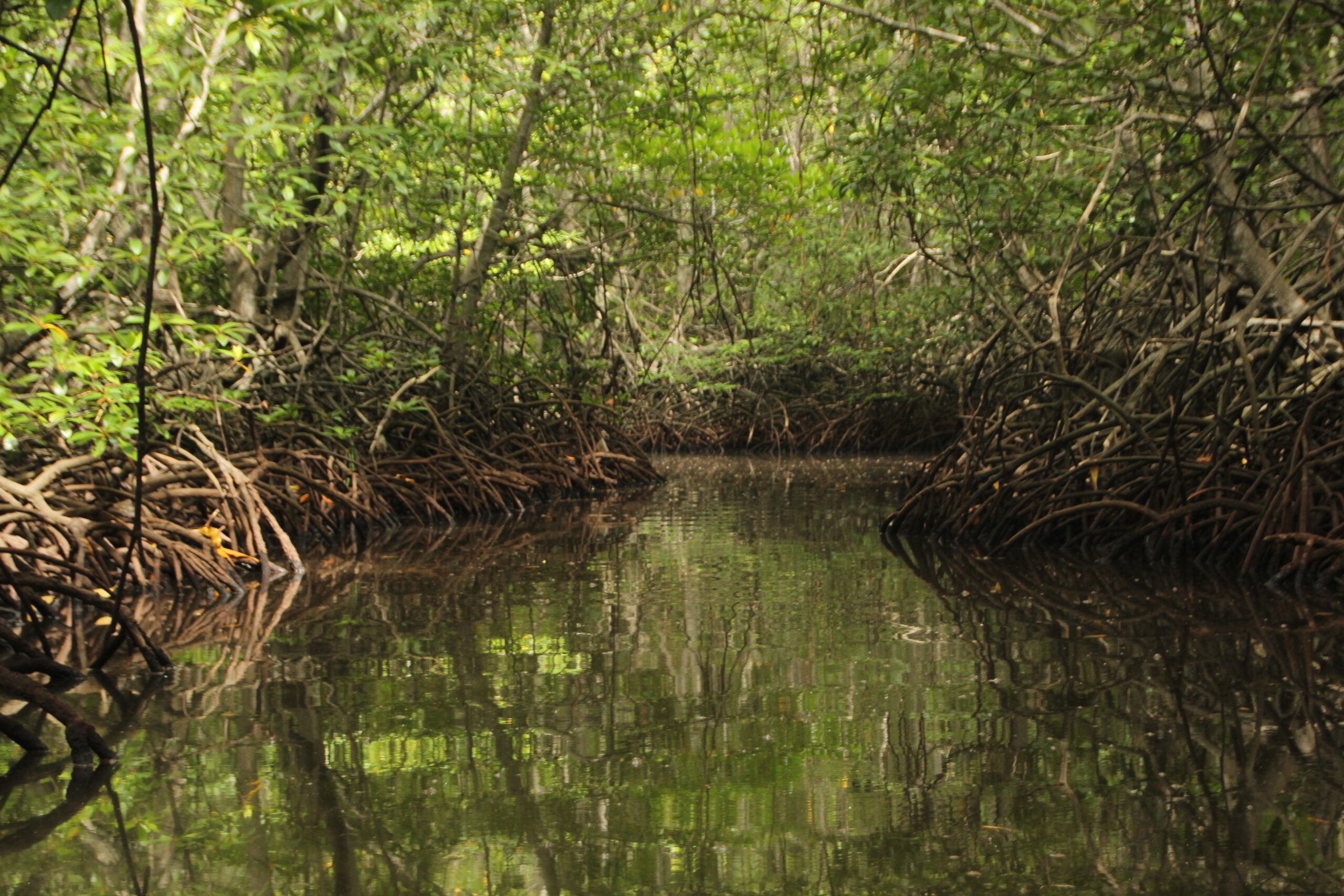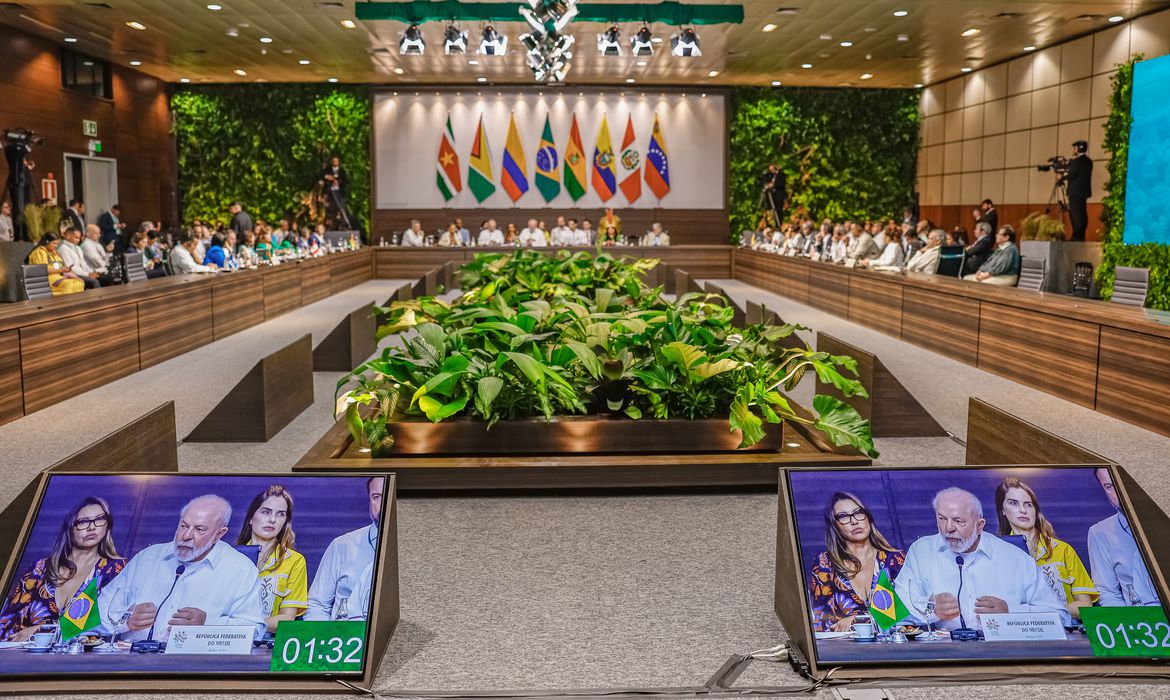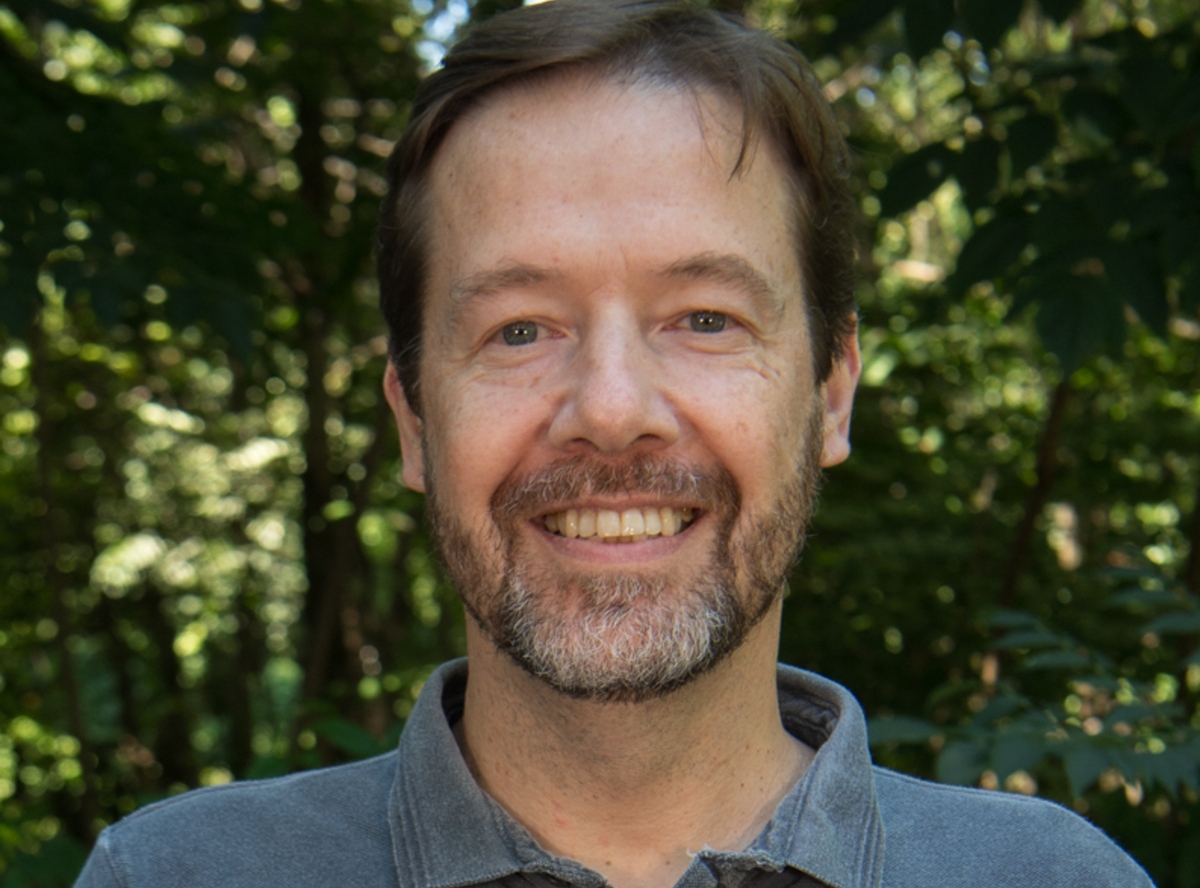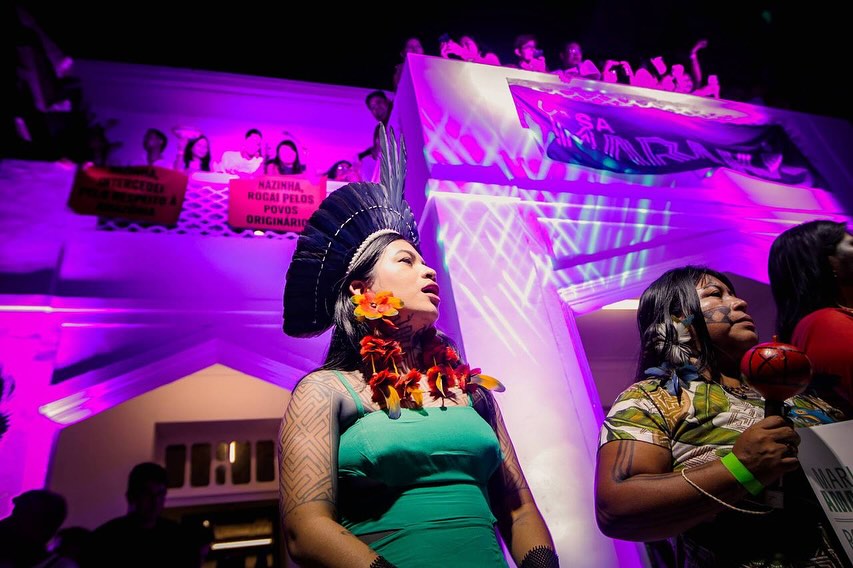
Wetlands: the silent climate protection threatened by the imperative of profit
Key to climate mitigation, ecosystems remain threatened by speculation and the colonial logic of land use
by Izabella Mota, from the NINJA Collaborative Coverage at COP30
In different Brazilians territories, the water doesn’t limit itself to the rivers and rainfall. Mangroves, floodplains, marshes, igapós, coral reefs, peatlands, and wetlands are arranged in an intimate relationship between land and water. Silently, they perform the work of regulating the climate and sustaining biodiversity.
In Earth science and in the water cycles, each wetland establishes a living network of interactions. Mangroves, in addition to functioning as major nurseries for marine life, are capable of capturing and storing up to five times more carbon dioxide (CO₂) than tropical forests, according to the United Nations Environment Programme (UNEP). This potential is due to their waterlogged soils, which keep carbon trapped for years when they remain intact – the same occurs in peatlands and swamps.
Marshes, on the other hand, play a role in maintaining local microclimates and soil moisture, serving as refuges for endemic and threatened species. They constitute an essential structure for geochemical balances, such as the carbon cycle, through the preservation of biodiversity.
Pressures and losses: the price of destruction
Under constant violence and facing growing threats, the wetlands areas are targeted by agricultural and urban expansion, by real estate speculation that ignores their environmental value, revealing a profit-driven logic, and by extensive waterway construction carried out without consulting local communities.
Despite their strategic role, conservation policies aimed at mangroves and other wetlands have not kept pace with the speed of the pressures affecting these territories. Since 1970, we have already lost about 35% of these areas: a rate of destruction three times higher than that of forests, according to UN data released on World Wetlands Day. This decline threatens not only the diversity of living species, but also the climate-protection capacity provided by these ecosystems.
Brazil felt the impact of this destruction dramatically in 2020. The Pantanal faced the largest cycle of fires ever recorded, with about one-third of its area burned, according to research by INPE using images from the Sentinel-2 satellite. The flames advanced precisely over the wetland regions that historically served as natural barriers against fire. When these areas are drained, degraded, or converted into pasture, the hydrological balance is disrupted, and the biome also loses its ability to slow down extreme events.
The living science of wetlands: communities and knowledge
This vast mosaic of wetlands — regions where water dictates the rhythm and the way time is lived — is where riverine peoples, quilombola communities, and Indigenous peoples, with their millenia-old practices of care, enter into synergy with nature and its wisdoms.
The survival of these areas rests in the hands of shellfish gatherers who resist the privatization of the tides, of riverine women who care for the igarapés as extensions of their homes, and of Indigenous people who, through their cosmologies, see nature as a living, pulsating, reciprocal being. This is, therefore, a global threat that falls even more directly upon these people, who embody their ancestral knowledge and traditions, whose understanding and transmission of wisdom are indispensable for the preservation and continuity of these teachings.
Climate paradox and COP30
The accelerated loss of wetlands exposes a paradox: while the world seeks strategies to mitigate the climate crisis, the ecosystems that offer concrete solutions continue to be destroyed and neglected due to the absence of care and investment policies. With COP30 taking place in Belém, in the heart of the Amazon, Brazil faces not only the spotlight but also the responsibility of placing these ecosystems at the center of the climate debate. Recognizing mangroves, floodplains, igapós, and the Pantanal as essential infrastructures for adaptation and mitigation is a decisive and urgent step for the country to lead, through action, the defense of the territories that sustain life.




